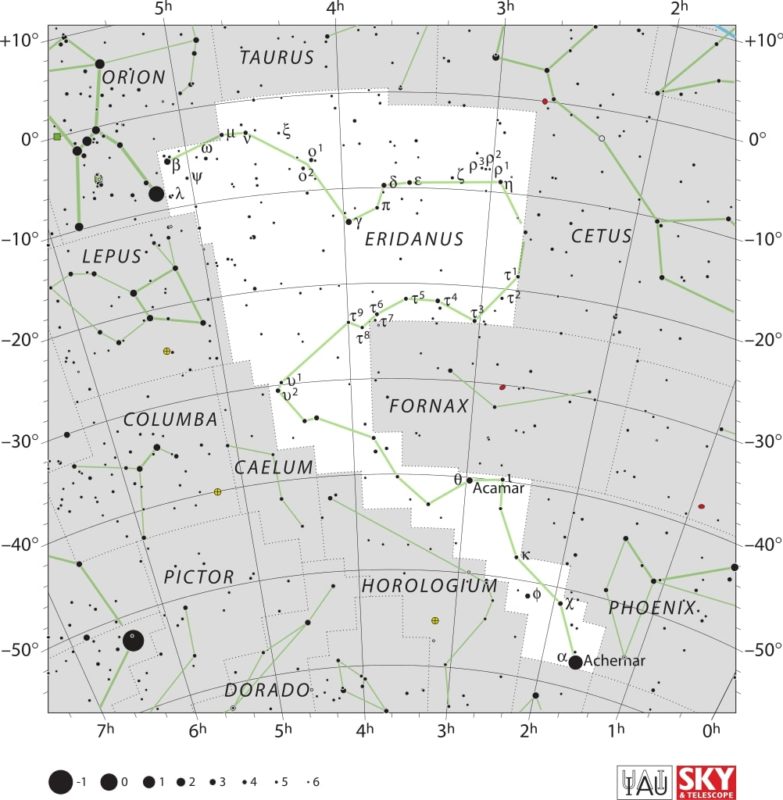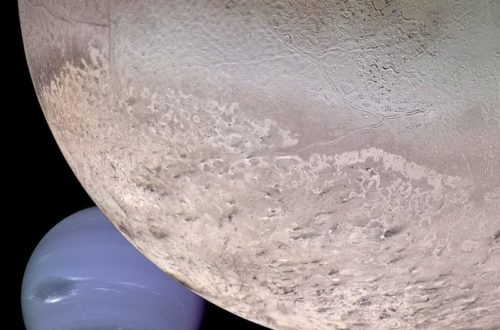Nu Eridanid Meteor Shower Guide

The Nu Eridanids are a minor meteor shower that takes place each year, with activity peaking in early September. The shower appears to come from the constellation Eridanus.
Rates of meteors per hour are variable, but the event draws attention from amateur astronomers and sky watchers. Light from the Moon and weather can make it hard to spot these meteors, so dark skies help a lot.
The shower is best seen after midnight, when Eridanus rises higher. Details on viewing, peak dates, and what to expect from the Nu Eridanids follow in the main body of this article.
What Are Nu Eridanids Meteors?
The Nu Eridanid meteor shower is a lesser-known, yet notable, event in the astronomical calendar. Its radiant sits in the constellation of Eridanus.
Nu Eridanids meteors are very swift, hitting the atmosphere at around 67 km/sec. They are usually very faint, with some brighter streaks kicking around. Typically, these meteors are smaller and occur less frequently than other showers.
Their high speed increases their brightness, but their small size prevents most from becoming prominent. This has an impact on the trains they produce—usually short lived and less multicolored than those from bigger showers.
How to Spot Nu Eridanids
Seeing the Nu Eridanid meteor shower is both an art and science. Catching these meteors requires patience, the right gear, and some insider knowledge. Follow our complete how-to guide below to spot and observe the Nu Eridanids. Have fun with it!
Pinpoint the Radiant Location
Locating the radiant pinpoints your target area. The radiant is the point in the sky from which the meteors appear to originate. For Nu Eridanids, this point is located in the constellation of Eridanus.
This allows for a much simpler process of spotting meteors without the aid of any equipment. Star charts, either on paper or through an app, are useful tools. Using mobile apps can help you plot the radiant’s precise location.
Understanding the radiant position is important. Meteors that aren’t coming from this point may be from different meteor showers. Telling the difference allows you to maintain the integrity of your count, which is really important if you’re counting meteors or recording data.
Best Viewing Times Revealed
Timing is everything when it comes to meteor observation. You can see Nu Eridanids all night of the peak on September 6. Some meteors can also be seen between September 1 and October 29.
The peak produces the most meteors visible, particularly under dark and clear skies with little moonlight. Your local time matters too and plays a role in what you’ll see! The later the hour, the higher the radiant, the more meteors you will see. Whenever possible, stay up past midnight to see the full display as this will be your best chance.
Gear Up: Eyes vs. Equipment
Nu Eridanids, as is the case with almost all meteor showers, are best enjoyed with the naked eye. Because telescopes have a very narrow field, they can miss fast meteors that zip through quickly. If you’re hoping to scan the sky for the fainter meteors, get yourself a pair of wide field binoculars. Magnification powers of 7×35 or 10×50 are ideal options for this!
For meteor photography, you’ll want to use a DSLR or mirrorless camera. We recommend using a wide-angle lens (14-24mm) and a heavy-duty tripod! To get long streaks of light, like train movement, use long exposures (10-30 seconds) and a high ISO setting.
Comfort, comfort, comfort! Reclining lawn chairs, warm clothing, and snacks are highly recommended. A red flashlight will help you keep your night vision, without wrecking your eyes’ sensitivity.
Viewing Tips for Success
There are a few simple techniques that can greatly improve the experience. Allow your eyes a minimum of 20 minutes to fully adapt to the dark. Wear warm layers, as nights can be quite chilly even in early autumn.
Invite friends along or find a local astronomy club—more eyes make the experience more enjoyable and can assist in keeping track of your count. So above all, stay patient! Unfortunately, meteors don’t fall on command. Occasionally there will be a flurry. Other times, you’ll wait several minutes in between streaks.
Watch as much as you want, take notes, and enjoy!
Patience: The Stargazer’s Virtue
Meteor showers are incredibly rewarding to the patient observer. Pack a book, load some music, or bring some good company to enjoy while you wait. Keeping busy makes the slow hours pass quickly, and when you see a bright meteor streaking overhead, it’s nice to make it all worthwhile.
For first-timers, remember that if you only catch a few meteors, that can still be a magical evening. With a little perseverance it’s usually worth it for a beautiful show to remember.
Conclusion
The Nu Eridanid meteor shower adds an extra dash of excitement to stargzaing. Every summer, as these meteors sprint across the night sky, they deliver a spectacular but brief performance. All you need is a clear sky and a little patience, and anyone can start to spot them. Pick up a blanket, put it on the ground in a dark area, and gaze skyward.
Post your observations, exchange experiences, or simply delight in the understated excitement. Have a question or an idea for a tip of your own? Leave your comments in the comments section—we’re looking to improve so we’d love to get your feedback.
Frequently Asked Questions
Where should I look in the sky to spot Nu Eridanids?
Face the southern sky and look for the constellation of Eridanus. The meteors will seem to radiate from that area of the sky.
Do I need special equipment to watch Nu Eridanids?
Simply use your naked eye, head to a place where light pollution is minimal, and allow your eyes some time to adapt.
What causes the Nu Eridanid meteor shower?
Like all meteor showers, Nu Eridanids are produced by small debris from a comet or asteroid burning up in Earth’s atmosphere.
Are Nu Eridanids meteors safe to watch?
The meteors are completely harmless to ground-based observers as they burn up high in the atmosphere.
See also:
- Previous meteor shower: Aurigid Meteor Shower
- Next meteor shower: September Epsilon Perseid Meteor Shower
Would you like to receive similar articles by email?





